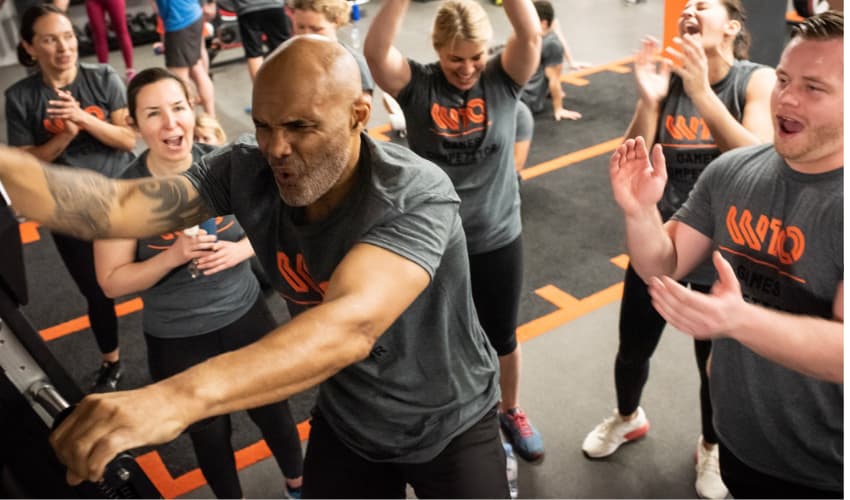
Categories
Group Exercise vs. Personal Training
Should we make fitness personal?
The truth is, personal training can be really effective for getting into shape, particularly for people who are very new to exercise, suffering from previous injuries or for those with very specific goals, like athletes in training.
For these three populations, personal programmes and individual coaching will almost definitely garner the best results. But what about the other ninety-five percent of us, those of us who have some gym experience, are not injured and whose goal is general fitness? I think we will almost always do better when we train in groups.
In my opinion, once we have a good base of training and we’re structurally sound, most of us will remain far more engaged and motivated – and will ultimately get far better results – when we train in small groups. Personal training works for focused periods, but eventually, the relationship gets in the way of the training.
The reality is – and this will be hard sell to the exercise purists – that most of us simply don’t need the specialisation and finely detailed programming that many personal trainers might have us believe. We all need a knowledgeable and experienced coach, but most of us also need the same things – more posterior exercises, single leg training, core conditioning, shoulder stabilisation and a tonne of back exercises to balance our seated posture.
A good way to think about it is that we fix injury and weakness individually and build fitness and performance in groups. If you look at any sports team, or even many individual athletes, this is how they work. Those with injuries workout alone, following very specific and personalised sessions, whilst the rest of the group follow broadly the same programme, under the guidance of a skilled coach, who has the knowledge and experience to modify the athlete to the programme, rather than the programme to the athlete. It was the same at school and throughout our teenage sporting years; we trained in groups, except when we where injured, or, for the more apathetic amongst us, we forgot our games kit. We all have much the same requirements, just tweaked for us individually.
Most of us prefer exercising in groups and we almost certainly work harder when the group dynamic keeps us accountable for what we do. I for one am much less likely to skip a rep, or complain about just one more, if others around me are doing the graft. Training in small groups is more fun – hence why all of the biggest fitness movements have been in a group format – more flexible, and is of course more cost effective, making the barrier to entry for good coaching much lower than with personal training. That said, there is a point of diminishing returns. Group training works very well, but not when the groups are too large, and particularly when the exercises involved are more technical and require a greater degree of coaching – think squats, deadlifts and so on.
Much like the approach for sports, it is useful to think of training as comprising of two separate components: strength and conditioning. Strength training is the cornerstone of the programme and is where we include the more skill-based and technical exercises, whilst also challenging the body with increased weights. Conditioning is where we work our heart and lungs, typically with lower skill-based exercises, higher reps and lighter weights. The strength component is where we create the quality foundation and the conditioning element is where we turn up the music, have some fun and just work the body hard.
Both strength training and conditioning work well in groups for most of us, but in groups of various sizes. Our strength training, where the quality work is done, is done better in smaller groups, of say two to four, where the coach or trainer can modify the programme easily for the individuals. Our conditioning sessions on the other hand, can easily be done in larger groups, of say 10 to 20, as the skill or technical component is much lower and the coaching becomes more about motivation and pushing people to work harder, rather than learning new skills, lifting heavier weights, or improving technical proficiency.
If you are a beginner to training, injured or have sports specific goals, you might want to consider personal training. But for the rest of us – that is those of us with some gym experience who have no significant injuries – and whose goal is general fitness, we will almost certainly do better in groups.
If you have any questions on the above or would like some advice on how we could help you with your fitness goal, don’t hesitate, visit our gym in North Kensington and try one of our small group personal training sessions.
Related Articles
- What is Group Personal Training?
- One to One versus Small Group Personal Training
- 10 Benefits of Group Personal Training
- 4 Reasons Small Group Personal Training is For You
- Personal Fitness Goals and Small Group Training


